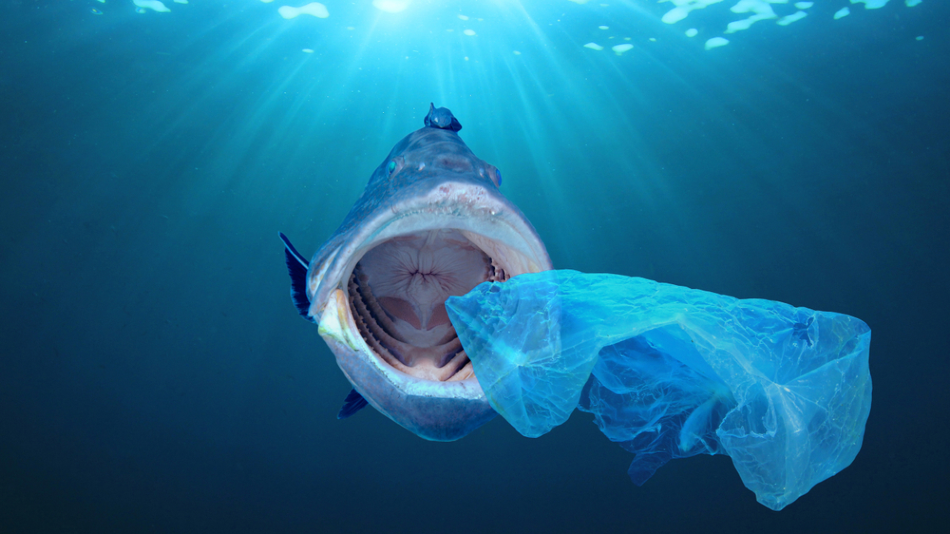
Image Credit: Rich Carey/Shutterstock.com
An international team of researchers has developed a new method to investigate the structure of microbial communities that attach themselves to microplastic trash, a significant concern to marine biologists.
In November 2019, the team published its findings in Molecular Biology Resources, highlighting the potential of this new method for gaining an understanding of how microplastic waste in the oceans is impacting the marine ecosystem.
Microbes Coat Ocean’s Plastic Trash, but Impact on Ecosystem is Unclear
Scientists from the Josephine Bay Paul Center for Comparative Molecular Biology and Evolution in Massachusetts, USA, joined forces with the NIOZ Royal Netherlands Institute for Sea Research and Utrecht University, to investigate the impact of microplastic on the world’s oceans.
According to recent figures, between 4.8 and 12.7 million tonnes of plastic is introduced into the world’s waters per year. Scientists have discovered that most of this plastic trash is in the form of microplastic approximately the size of a grain of rice, or less.
The first concern raised by the abundance of these microplastics is that marine animals can easily ingest them, even the smallest species. This is likely to have a detrimental effect on their health and survival chances.
The microplastics have also been found to be coated in a thin film of bacteria and other microbes, creating a biofilm that scientists have termed ‘The Plastisphere’. The Plastisphere can continue to break down the plastic into smaller pieces, and can make them sink or float. They can even cause the plastic to smell or taste like food to some marine animals, encouraging them to consume them.
Scientists do not currently know which species of microbes make up the Plastisphere, and their interactions with the plastic and each other are also unknown.
Gaining an understanding of the Plastisphere is essential to determining how the plastic debris is impacting marine life, and to being able to intervene and protect the ecosystem successfully.
Up until now, the available technology to study the Plastisphere has been limited. For this reason, the American and Dutch team decided to develop a new method.
Using Microscopy to Investigate Microbial Communities
Inspired by a well-established fluorescence imaging technique, the team developed an innovative microscopy technique called CLASI‐FISH (combinatorial labeling and spectral imaging – fluorescence in situ hybridization) using confocal microscopy to study Plastisphere communities.
This method allowed the researchers to understand the spatial organization of microbes covering the plastic samples. To do this, the team set up the method so that when probes came into contact with known bacterial groups they became fluorescent to mark their presence.
What They Found
Combinations of a variety of diatoms and bacteria were found to be colonizing the microplastics. Across all the samples they took, three types were identified as the most common: Proteobacteria, Cyanobacteria, and Bacteriodetes. In relation to the spatial structure of the Plastisphere, scientists found that the microbial communities were mixed heterogeneously, allowing for inferences to be drawn about the interactions on marine microplastics.
The team developed a probe-set encompassing three existing phylogenetic probes and four new probes that the researchers had designed explicitly for targeting Bacteroidetes, Vibrionaceae, Rhodobacteraceae, and Alteromonadaceae. This method reduced the chance of false positives because targets are confirmed with two or more probes. Taxa and their spatial distribution were identified and visualized simultaneously in a number of experiments investigating three different biogeographical regions.
Conclusion
The main achievement of this study is the development of a valuable new technique for investigating biofilm development, including exploring interactions and associations between specific microscopic taxa.
The team is confident that a reliable protocol for determining the spatial structure of the Plastisphere has been developed, which is a step in the right direction for understanding the impact of plastic trash on the ocean.
References and Further Reading
Schlundt, C., Mark Welch, J., Knochel, A., Zettler, E. and Amaral‐Zettler, L. (2019). Spatial structure in the “Plastisphere”: Molecular resources for imaging microscopic communities on plastic marine debris. Molecular Ecology Resources. https://onlinelibrary.wiley.com/doi/full/10.1111/1755-0998.13119
Disclaimer: The views expressed here are those of the author expressed in their private capacity and do not necessarily represent the views of AZoM.com Limited T/A AZoNetwork the owner and operator of this website. This disclaimer forms part of the Terms and conditions of use of this website.